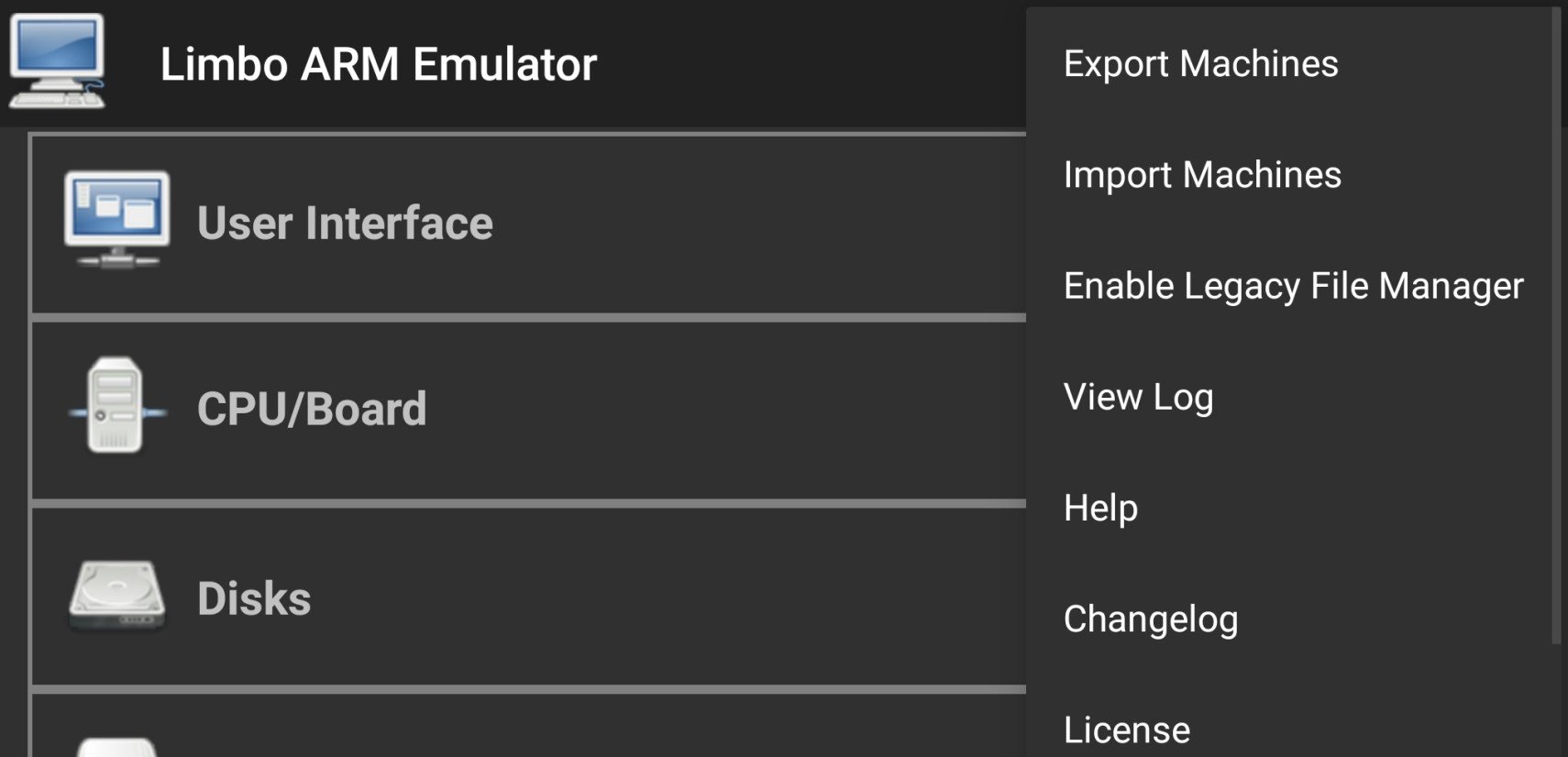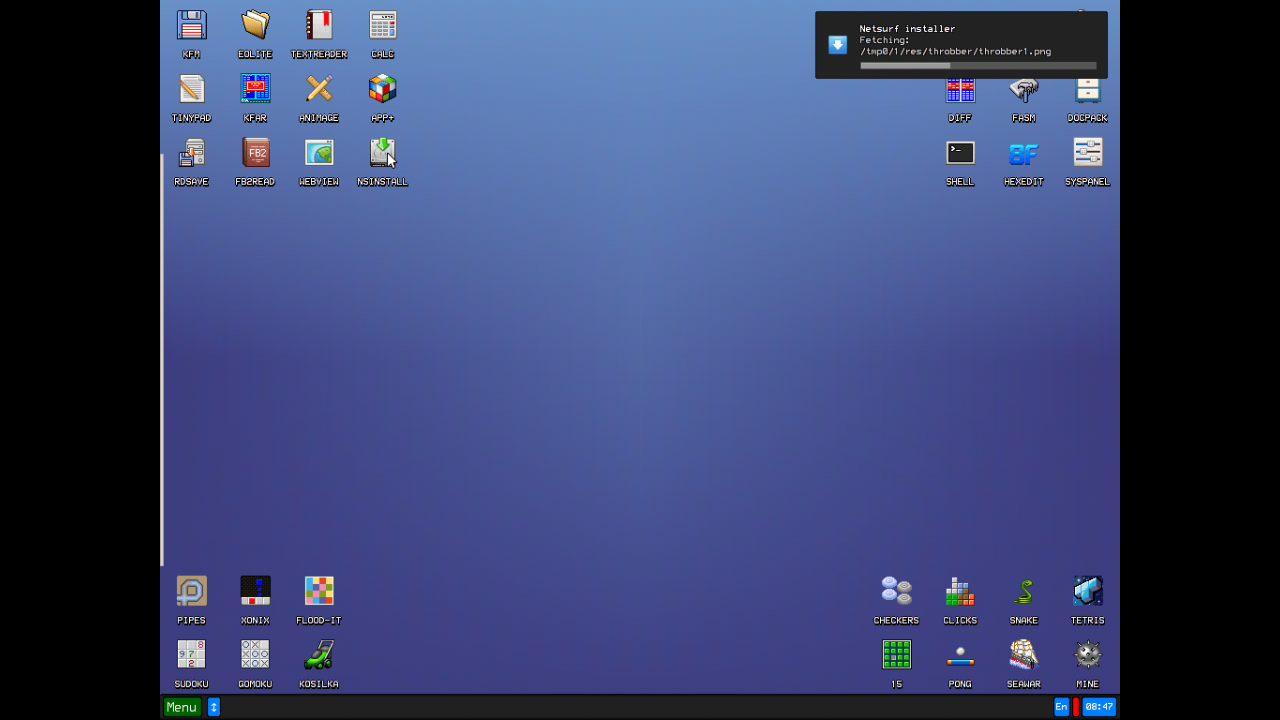
- #Limbo emulator linux packages install
- #Limbo emulator linux packages android
- #Limbo emulator linux packages code
- #Limbo emulator linux packages download
- #Limbo emulator linux packages windows
So, I gotta run Slackware 11.0 w/ minimal packages from that (and, that's pretty tight- but doable). This leaves me with only 4GB on the main system disk. And, Limbo does not request write access on external disks. *My* device does not allow integrating an add on Micro SD with the system disk. So (using a RAID), best case scenario is installing a system on an 8GB filesystem. Also, a user is limited to (at most) four disks by Qemu.
#Limbo emulator linux packages install
So, this leaves a user needing to install a system on disk images that are (at most) 2GB (just one of the many, many completely unnecessary limitations of worthless Android).
#Limbo emulator linux packages android
Android only allows permissions on a FAT32 filesystem.

Damn Small Linux runs pretty well, too (but- I couldn't stand using it because it doesn't allow a user to improve the system!) And, Limbo makes what would (basically) be a useless hunk of plastic into a halfway decent system that allows a user to actually make use of the device. Limbo x86 runs Slackware 11.0 really well on top of an Android system for ARM. So- buy one of those and stop trying to be a hacker.
#Limbo emulator linux packages windows
You would like to run a brand new Windows system on a brand new x86 desktop that you payed hundreds or thousands of dollars for. If this is not obvious to you, you are using the WRONG SOLUTION. And (obviously), the most common use of this emulator is going to be running an *older* x86 system (an *operating system*- not a crappy Windows system, which is just a useless toy) on an Android device that is running on top of an ARM based system. Linux core2 3.16.0-4-amd64 #1 SMP Debian 3.16.Limbo x86 is a port of Qemu x86 for a cruddy Android API (which is basically worthless on its own). I: Resolving dependencies of required packages. variant=buildd -exclude=debfoster jessie debian-arm64

# qemu-debootstrap -arch=arm64 -keyring /usr/share/keyrings/debian-archive-keyring.gpg \ In the command below, the Chroot will be named debian-arm64. The fourth step uses debootstrap to create the Chroot environment. They are qemu, qemu-user-static, binfmt-support and debootstrap.Īpt-get install qemu qemu-user-static binfmt-support debootstrap The third step is to install the requisite packages. Otherwise, you will have to configure each Chroot's locale individually. The second step is to configure locales so your Qemu Chroots have access to them. Since Debian supports arm64, installation is as simple as as the following. Interpreter = /usr/bin/qemu-aarch64-static # update-binfmts -display | grep -i aarch You can verify support by checking for the availability of the aarch64 interpreter: (Add -enable-kvm if your host CPU is a 64-bit ARM.)īuild your own Arm64 (or armhf or armel) QEMU imageĪ shell script building a bootable QEMU image is available at The script can be run on Debian like Linux of any CPU. drive if=none,file=debian-9.9.0-openstack-arm64.qcow2,id=hd0 -device virtio-blk-device,drive=hd0 \ bios /usr/share/qemu-efi-aarch64/QEMU_EFI.fd \ Qemu-system-aarch64 -m 2G -M virt -cpu max \ Ssh-add -L > /mnt/home/debian/.ssh/authorized_keys Sudo qemu-nbd -c /dev/nbd0 debian-9.9.0-openstack-arm64.qcow2 Sudo apt-get install qemu-utils qemu-efi-aarch64 qemu-system-arm You can check which ones are active by running: If you have not already done so, generate your ssh key:Įnsure that the public ssh key(s) you wish to be placed on the client VM are active within your authentication agent. Prerequisite: verify public ssh key on the host

The following steps use debian-9.9.0-openstack-arm64.qcow2 as an example.
#Limbo emulator linux packages download
You can download a prebuild Arm64 image from
#Limbo emulator linux packages code
This code was incorporated into Qemu 2.0 in March 2014 by Linaro, and there is no longer a need to build arm64 from the development branch. The development was done by folks at SUSE Linux, so kudos to them. The emulation becomes several times faster! (Is it available in Buster?) For 32-bit emulation on 64-bit ARM, use qemu-system-aarch64 -enable-kvm -cpu host,aarch64=off. Add -enable-kvm -cpu host to qemu-system-aarch64. In 2020, qemu-system-arm 5.1 and linux-image-arm64 5.9 Debian packages enable the KVM acceleration. It is fine for building software, and it is _much_ faster and often easier to use than ARM's proprietary (free beer) Foundation Model. It is a user-space emulation, so it may not be applicable to all development tasks. In October 2013 the arm64 (aarch64) qemu port became publicly available.

Qemu 2.0 includes arm64 support, and Debian 8 (and above) fully supports it.


 0 kommentar(er)
0 kommentar(er)
